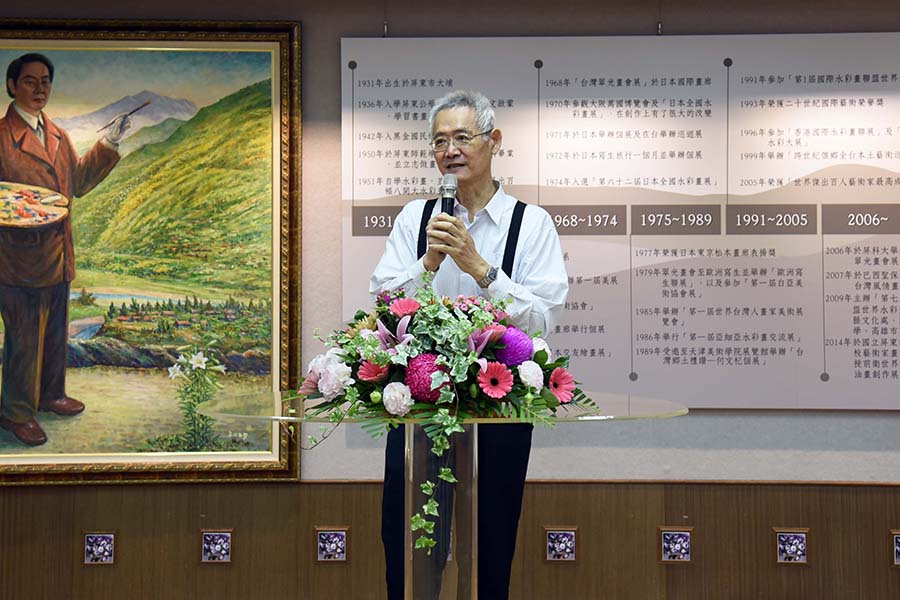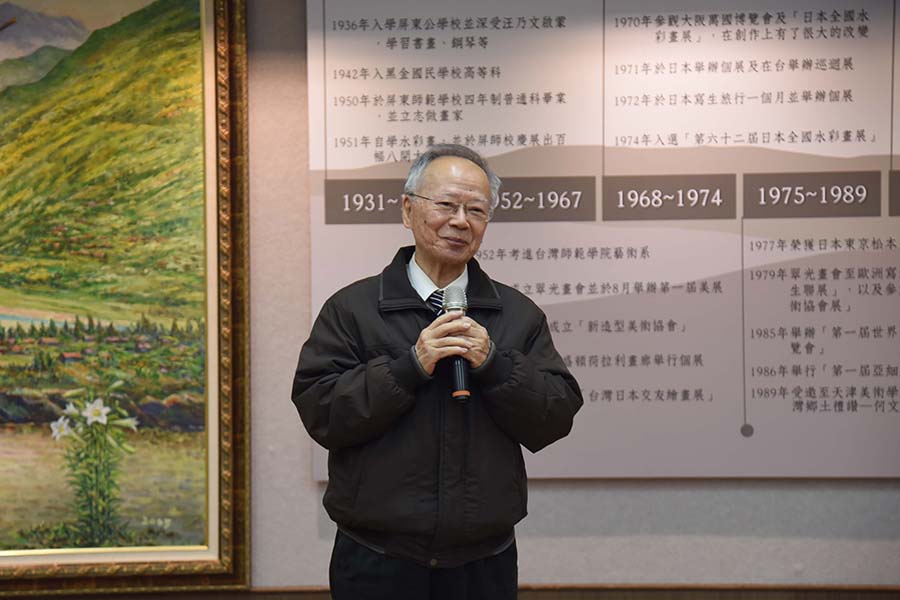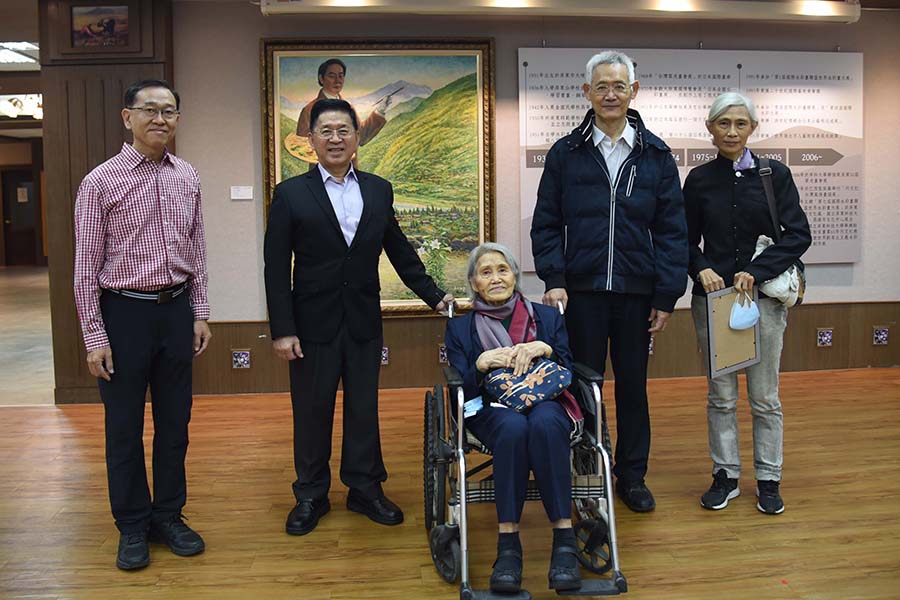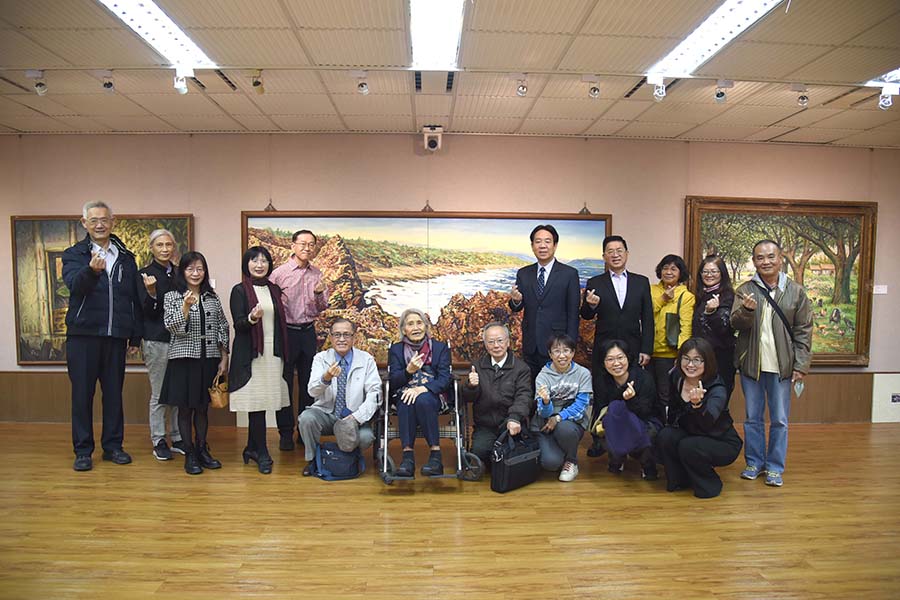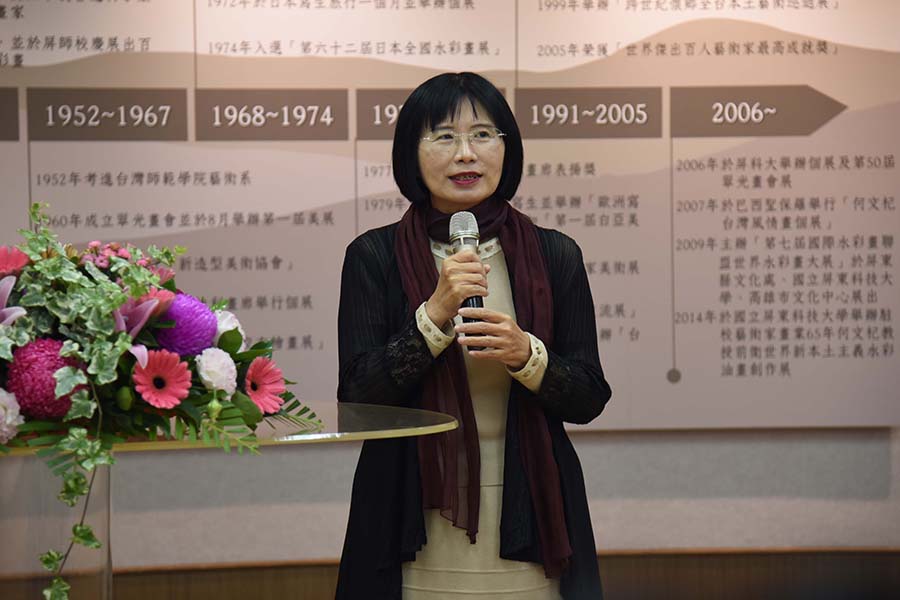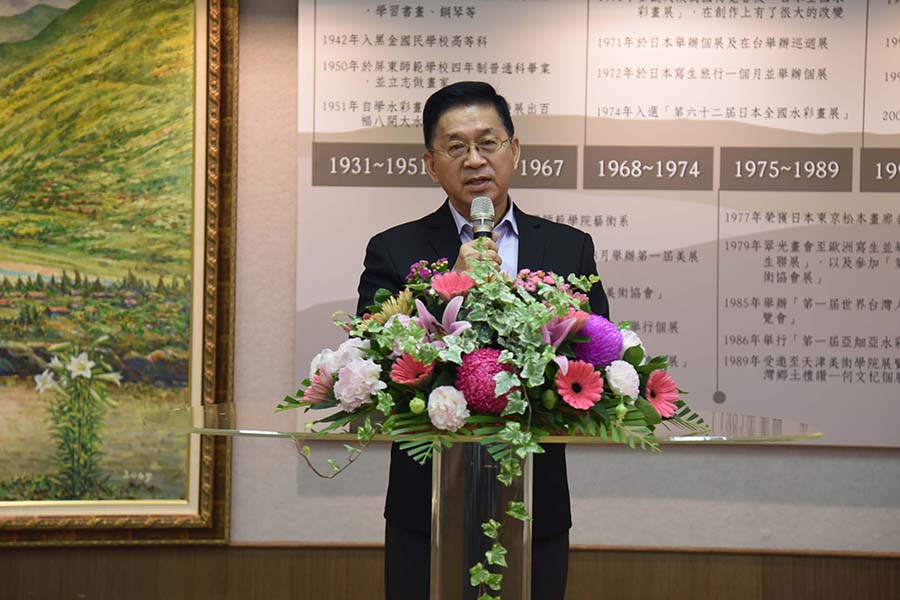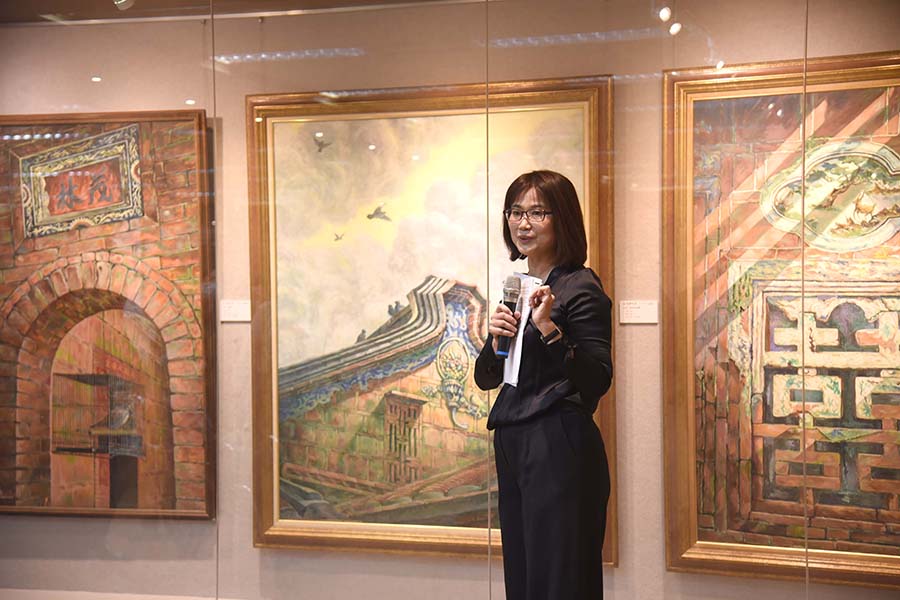In order to help teachers, students and the community get better acquainted with a local individual who has made outstanding contributions in art and academics, the National Pingtung University of Science and Technology (NPUST) Library and Exhibition Hall held a special exhibition, entitled “Eternal Light: Ho Wen-chi’s Hometown Brushwork”. The exhibit, which showcased Mr. Ho’s paintings of his Pingtung hometown, was divided into four periods, including the “self-exploration and modern painting research period”, “rural environment care period”, “rural issues and the beauty of ancient houses period”, and the “natural beauty and cultural care period”. A total of 33 works were included in the collection.
Ho Wen-chi (1931-2023) was born in the Dapu neighborhood of Pingtung City and entered Pingtung Public School in 1936. In the first grade, he met his first teacher, Wang Naiwen, who first fostered his interest in painting. In the third grade, Ho painted a painting on the theme of “Horse Love Day”, which gave him confidence in abilities. After graduation, Ho taught at Liugui Elementary School, where he helped beautify the campus, provided guidance in art and music, and even offered tutoring to students at his own expense. Later, he enrolled at the Fine Arts Department of National Taiwan Normal University, where he advanced in the field of aesthetics under famous professors such as Liao Chi-chun. After graduating, Ho successively taught at Pingtung Polytechnic and Pingtung Girls’ High School.
In 1970, Ho was asked by a woman from the US Army Advisory Corps “why don’t you paint the scenery of your beautiful hometown, Formosa?”. At the time he was also influenced by Picasso’s works, and wanted to convey feelings of love for the country and the villagers—and so he adopted the rural characteristics of southern Taiwan as his theme, putting to canvas local architecture and plants and flowers. Ho was also committed to the protection of historical sites, believing that the good intentions of our ancestors should be admired and preserved. He also used his paintings to bring attention to social issues, making critical observations of the government and society through works such as “Helpless” and “Hometown at Dusk”. Following the severance of diplomatic relations between the United States and Taiwan, Taiwanese people developed a stronger sense of local consciousness, and Ho began actively participating in political movements, expressing his care for society and his country. Ho assisted Taiwan with international art exchanges and also established an art association to give Taiwanese painters room for development and to exhibit their art for the world to see.





